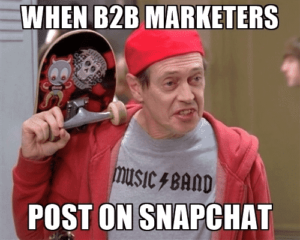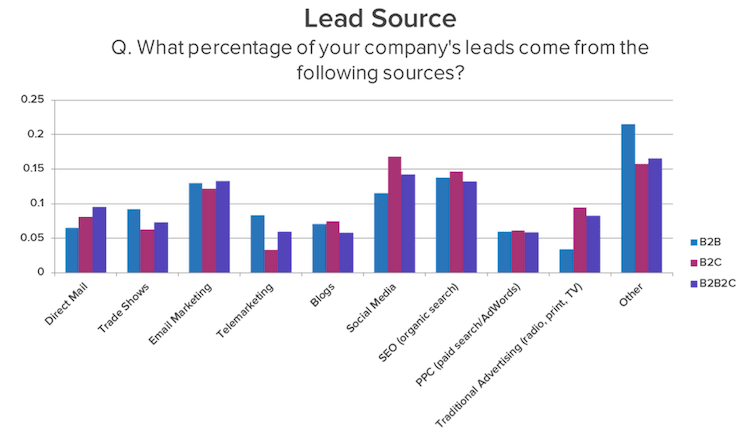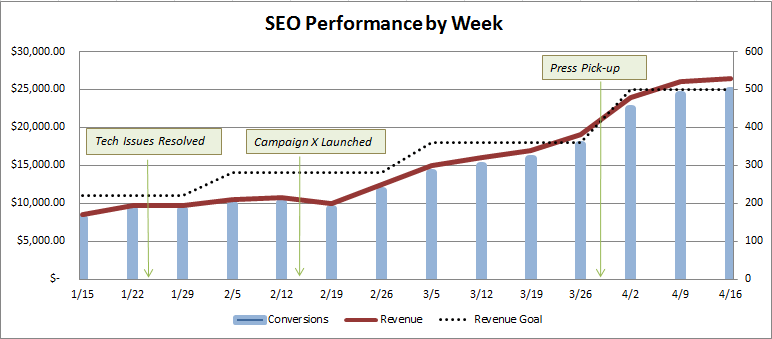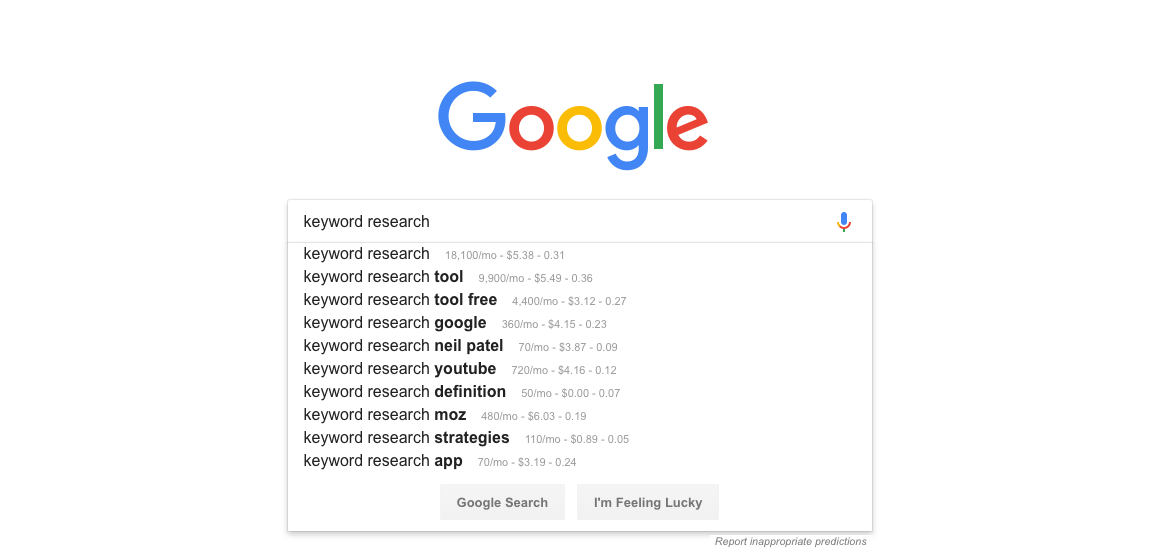Essential SEO Tips for SaaS Companies to Rank Higher and Reach More Users
Any company operating in the software as a service (SaaS) industry thrives on digital outreach as a means for new customers. Strong competition requires consistent efforts online […]
Any company operating in the software as a service (SaaS) industry thrives on digital outreach as a means for new customers. Strong competition requires consistent efforts online to maintain current consumers and keep them from heading to a rival. Plus, gaining leads keeps the customer base growing, which is essential to the operation of any SaaS company.
So much of an SaaS business’ success relies on reaching potential customers and reiterating unique services and perks of their particular offerings. SEO strategy provides a path towards organically reaching customers who are in need of what an SaaS business has to offer. Plus, Saas Companies can utilize SEO tactics to grow the customers they need while developing content and information consumers seek out from companies like theirs.
Software-based startups and established companies don’t just work to reach customers; they also seek to be experts in their market niche and compete with other brands to be seen as the premier provider of a given service. To stress this credibility while simultaneously growing a user base, a B2C or B2B SEO plan allows all aspects of a software company to be centrally condensed into a core marketing strategy.
Let’s go over why SaaS SEO is an effective way to grow software-based clientele, as well as carve out a leading role in any given industry. To start, here’s why the goals an SaaS company have already align with what a large-scale search engine optimization initiative includes.
How Does SEO Fit Into SaaS Organizational Goals?
SaaS companies operate in two main structural formats. Depending on their structure, the organizational goals of a software services company vary.
SaaS B2B Structure
In some cases, SaaS clients are other businesses, thereby operating as B2B providers. In this situation, a company sells its software as a service to other businesses. An example of this type of company would be an email marketing platform that helps businesses keep a contact list of leads and customers to reach through newsletters and other email-based marketing tools.
SaaS B2C Structure
In contrast, a company can reach a SaaS customer directly through a B2C structure. An example of a successful B2C company would be a cloud-based document management software which allows a single user to sign up and utilize their service.
What Unique Features of SaaS Companies Impact an SEO Campaign?
In basic terms, SaaS companies focus on providing consumers or businesses with a software to fulfill or simplify a need. Because of this, much of the marketing of an SaaS product pertains to a general need – such as email marketing, digital document management and storage, or project management solutions – and a few specifics of that given software’s solution to the need’s problems or difficulties.
In the same vein, SEO marketing targets general keywords or search phrases. In order to carve out significant groups of potential users, companies tailor the right keywords to certain aspects of their offerings, such as price, user interface, and accessibility.
SaaS companies already market their services to important distinctions in their offerings against the competition. A B2B or B2C SEO campaign simply provides a blueprint for increasing organic traffic and digital authority as a means of building a larger user base among the right audience.
What Ways Can Companies Utilize SEO Best Practices?
There are two primary ways SaaS companies can utilize search engine optimization to have a major impact. The first is to utilize quality content with SEO keywords and structures as a complementary tool to what a sales team uses for lead generation. If all product pages and relevant pieces of content on a website are tailored for leads or guiding users through the sales funnel, then you might lack the informative, expertise it also takes to convert leads or find SaaS clients in the first place.
Secondly, managing the perceived value of an SaaS company’s service involves quite a bit of credibility management. SEO ranking factors and Google’s algorithm operate with content richness in mind. Therefore, working to build your content marketing strategy while keeping on-page and technical optimization in mind helps to build your site and service’s credibility at the same time.
Improving Lead Generation
The number one concern for any SaaS company is lead generation. Leads usually come from advertising, which specifically targets buyers with the highest level of user intent. Interestingly enough, paid advertising is only slightly more effective than SEO for attracting inbound leads. That means B2C and B2B SEO, which in practice is cheaper than paid search engine ads, can have just as much of an impact in reaching your target audience and attracting leads that eventually lead to a higher conversion rate.
If you want to rely on SEO for lead generation, you need to perform content optimization on all of your web pages. If they’re not up to snuff, then they won’t be effective in appearing in organic search and attracting clicks. The focus in lead generation on visuals and sales copy should not go away in favor of SEO. Rather, SEO should help to optimize your site for users entering a search query for the services you have to offer.
Game-Changer SaaS SEO Outcomes
With a great B2C or B2B SEO strategy in place for SaaS companies, the outcomes can be impactful to organizational goals and ROI.
Elements of a Positive Outcome
Credibility
Firstly, a proper SEO campaign is going to lead to increased credibility. In a nutshell, credibility in digital marketing includes brand recognition and influence, as well as more trust in the services you provide. Trust is hard to build through paid ads, as some potential buyers will see content as a sales pitch rather than helpful information on a service. Instead, SEO helps an SaaS website appear higher in the SERPs, which users see as a sign of success.
Conversion
As mentioned, converting sales and boosting ROI is a top priority for SaaS businesses. According to surveys of SaaS marketing professionals and their pain points, lead conversion only comes second to achieving a lot of traffic. Considering a comprehensive SEO campaign both increases leads and drives organic traffic – along with other benefits. Its implementation is a natural step in the process to grow and enrich an SaaS company’s platform and reach.
Content
Another outcome of a strategic SEO plan is enriched content. There are plenty of opportunities for creating this. Focus on landing page optimization and specializing blog posts, product pages, and other valuable content for niche keywords and search inquiries. Don’t forget to optimize the details of a page, too, including the title tag and meta description.
Following this approach for creating high-quality content that’s search-engine friendly means SaaS companies can spend less time crafting ads to reach potential buyers. Instead, they can create an optimized content strategy that performs well on the SERPs, increases brand awareness, drives organic traffic, and is useful for searchers.
Smart SaaS Strategy Starts with SEO
When crafting a plan to increase leads or conversions for a SaaS business, SEO should be the focus of a larger-scale initiative. Time and time again, SEO proves to be the most sustainable, predictable, and scalable tactic across outbound and inbound marketing initiatives for growing a SaaS company.
With a proper SEO plan in place, paid ads and other marketing channels can target more specific buyer personas and previously generated leads itching to be converted. When those things hit a bump in the road, SEO is the best way to steer the ship back to calmer waters while regrouping and revisiting strategy.
Technical SEO Improvements are a Game-Changer
SEO goes beyond keywords and content. Technical SEO, which includes non-copy elements of a web page and the site structure, also contribute to stronger search rankings. A few examples of technical optimization elements are:
- Image optimization (e.g. alt tags)
- Links
- Plugins
- Metadata
- URL syntax
With these more technical elements in good standing, web pages run more smoothly and score better in search engine rankings.
Preparing for a Slow Start in SEO for SaaS
It’s easy to get excited about the prospects of SEO for SaaS companies, but there are a few things to consider regarding how fast a company sees results.
Results Aren’t Immediate, so Take Time to Firm up All Channels
On average, an SaaS company can expect to see their Google rankings rise after 4-6 months. That might seem like a lot of time before real result metrics trickle in. While waiting for landing pages to rise the ranks, take time to cross-promote efforts on all digital marketing channels, including social media and the re-optimization of good-not-great performing web pages.
Keep Estimates and Expectations Reasonable
With that timeframe in mind, it’s important to point out that real SEO results and increases in ROI might even take longer. SaaS companies can help the anticipation stay in check by doing a full analysis of where web traffic and other analytics are at in the current moment using Google Analytics or another software.
By doing so, tracking SEO results seems like a gradual process of improvement, rather than a waiting game to see what search results page you end up on every day. This is where the One Month Rule comes in handy. SaaS companies usually can expect to see some traction in their SEO efforts after one month of implementation.
It might come sooner, and it might take longer, but one month is usually the perfect time to check back in. By taking one month to keep expectations reasonable, the process of waiting for SEO results feels much less strenuous day-to-day.
SEO Rankings Take Time, But Other Results May Not
The overall ranking of an SaaS website and individual landing pages might take months, but small boosts to other analytics might prove to show progress. By focusing on page optimization through the insertion of internal and external links, for example, companies can improve the user experience and therefore might notice that their CTR or bounce rates improve, or even session duration.
Any positive reaction to the efforts being made to implement SEO elements into an SaaS marketing plan should prove to business owners that the duration it takes to achieve major results is worth waiting for.
How to do Keyword Research for an SaaS Company SEO Strategy
If the right keywords are so important, then where are SaaS companies finding them? Well, there are paid keyword research tools like ahrefs, but the process is quite manageable for a marketing team to handle on its own.
Google Autofill is a Great Introductory Tool
The first move to make during keyword search is also the most obvious: Google autofill. The feature on the world’s most popular search engine is meant to speed up the process of finding what users want to search. Essentially, the algorithm predicts what users are going to type, meaning SaaS businesses can predict what keywords they should be targeting.
What do Other Companies in SaaS Sectors Utilize?
This tip comes with a caveat. By no means is SEO success going to come from simply using competitor’s keywords. That being said, marketing professionals might notice a company whose homepage performs well with dedicated keyword implementation.
Some businesses have success with industry keywords, such as “(X service) for marketing firms.” Utilizing what seems to work for successful businesses as a template to tailor keywords specific to your business is a great way to get started if you have little-to-no experience in SEO.
Use Specificity as an Advantage
Keywords are meant to connect content to what users are searching for. If a potential buyer wants to subscribe to a service, then they likely want specific features to be included. SaaS companies should include features and specifics that make them unique as keywords across content. Not to mention, uniqueness serves as a point of separation from competition.
Uniqueness sometimes means targeting more experienced audiences who know what an SaaS company offers. In this case, relevant keywords should call out a few key, advanced features and technical information that would help convert them. Other audiences, such as newcomers or curious novices, aren’t going to necessarily know the nuances of an SaaS niche.
Knowing that this audience exists as well can help target some more beginner-friendly keywords. Even an explanatory target keyword like “what does (X service) do” can be a useful way to educate novices to a type of service and target the search terms they’re using. From there, internal links and information about an SaaS brand might lead them to try that company out first.
Targeting Long-Tail Keywords
Any keyword that is four words or more is considered long-tailed. These are highly specific and often closer to phrases than words. Because of their specificity, long-tail keywords can help target potential leads that have a higher level of user intent and therefore are more likely to make a purchase decision.
For example, imagine someone wants to subscribe to an audio editing software. Simply targeting “audio production software” might not be specific enough to what the user wants the service for. Something like “audio production software for musicians” might more accurately fit user searches. Long-tail keywords connect users to the specifics that SaaS companies can offer.
Trends in SEO for B2B Companies
There are plenty of ways to carve out space in an SaaS industry’s digital world if you’re a B2B company. B2B SEO trends are a great way to keep up with emerging tactics to help get a jump on the competition and achieve higher rankings in search engine results.
Building on Niche Content within Google’s E.A.T. Requirements
SaaS companies with B2B customers love getting creative with their content. Whether it’s a campaign of testimonials from satisfied customers or a guest post series on best practices with a software, stepping outside of the box with new content is always a good idea.
A recent trend finds more and more companies moving towards niche content, including highly specific landing pages which might seem almost too narrow or focused. How can these pages continue to succeed despite their particular focus? Simple: they still follow Google’s E.A.T. requirements.
By creating high-quality content with Google’s pillars of rich content in mind, it’s easy to create a specific page to target a promising demographic of visitors while still maintaining “expertise, authoritativeness, and trustworthiness,” as the acronym suggests.
Mailchimp accomplishes this through their help center articles. In these posts, the company is able to explain key elements of a successful email marketing campaign, while providing examples of how their service fills the needs of these marketing goals.
Link-Building to Avoid Keyword Stuffing
Once a SaaS company has the ball rolling with SEO-rich content, they need to be careful not to keyword stuff. Google and other search engines hate seeing content that utilizes a keyword too often, and will punish that page’s chance of ranking as a result. Instead, they want to see your content on other sites being utilized as quality information.
A great way to build on B2B SEO success is to transition to link-building. Link building requires earning backlinks, which are links to your web pages from external sites. By doing so, SaaS companies can build credibility for their industry by showing up as expert examples of a specific category of content.
Guest posts are a popular type of content through which to link-build in a meaningful way. Guest posts involve an SaaS company providing content to another website that’s willing to publish it. Most guest posts aren’t major ads only promoting the SaaS business. Rather, the information is rich in the given company’s industry, and includes links to their website in order to properly link-build for better search engine results.
Spreading the SEO Love to Other Platforms
While SEO is likely a part of your web content’s master plan, that’s not the only place which benefits from online searches. Building SEO practices on newsletters and social media can be a great way to cross-promote relevant pieces of content on other online marketing platforms.
This helps spread your links out to new channels and audiences, while also building followings on vital platforms. Social media might not be as effective as webpage based optimization, but there’s no reason not to seek out growth on these channels, too, for the sake of reaching the right people along every step of the buying process.
Translating Analytics: Explaining the Numbers in Terms of Organizational Goals
As the organic traffic shift starts to indicate change to your analytics, how do you make sense of it all? Well, SaaS companies can benefit from turning the data into evidence for the completion or action towards organizational goals.
Simplify Website Visitor Experience: What’s being Won and Lost?
It’s tricky to look at analytics as a good or bad thing. Sometimes, the data shows strong points in one place, but weak spots in another. Keep things simple by asking marketing teams to come up with three data points:
- Who is visiting the site?
- How many of these visitors are quality marketing leads?
- Who are we losing to other sites?
Things like bounce rate, session duration, and other analytics seem somewhat divorced from larger marketing and organizational goals. By using SEO insights for goal tracking, all efforts come together in a digestible manner.
Exit Pages: The Clearest Sign of Where Improvement is Needed
Exit pages are the place on a B2C or B2B brand’s website that is last visited before a user leaves the site. Observing exit pages can reveal pain points for the visitor that are causing you to lose out on possible leads and conversions.
On some popular exit pages, business owners might find users are exiting on pages which provide opportunities for conversion, like product pages. It might very well be that the pages which host call-to-actions are what drive users away.
A B2C or B2B brand can’t rid themselves of these important pages that push for a buying decision; that would defeat the whole purpose of SEO. Instead, troubleshoot by rewriting copy, changing images, or adopting elements of other pages which are performing better.
Pave the Road for a Position of Expertise
An organizational goal of any SaaS business is to be seen as an industry expert by consumers and others in the business. The easiest way to do this is focus on a specific type of content to track.
Longer content that goes in-depth on various elements of a service builds credibility for a company. Not to mention, it also helps bounce rates and session duration as well. Blog posts provide the perfect outlet for this sort of content. Well-crafted, precise writing that holds a conversational yet informational tone is going to help show potential customers and the competition that a SaaS business knows their industry well. Through publishing blog content on a consistent basis, SaaS companies are able to be informative and build a relationship with their customers and subscribers.
Keep the Content Coming Regularly and On-Schedule
Lastly, an easy way to make the most of relevant content is to control the rate at which it gets published. Not only should posts be coming regularly each week, but a master calendar should plot out what piece of content will be released and promoted via social shares on a scheduled day, week, or month.
By doing this, an SaaS company can strategically release relevant blogs intended to target a specific set of data that might be lacking. Likewise, companies who plan a media calendar can publish content as it relates to annual events, like conferences or trade shows. By doing so, SaaS companies can maximize the reach of their web content.
Where does my SaaS Company go from Here?
With a B2C or B2B SEO strategy in place, where does a SaaS company continue to focus their attention?
Content Creation is King
There’s never a time where an SaaS brand is going to look at their web content and say “well, that’s it!” The job is never done, and informative content is always going to be one of the most important factors in growing brand awareness online and generating leads.
Once optimized for SEO standards, SaaS businesses can continue to push niche content that’s rich in search engine elements and trends to build their hold on the market. As more pieces of content are produced, it continues to establish the company’s role as a thought leader in the B2B world. Plus, topical depth provides bountiful opportunities for internal link-building.
The most effective way to accomplish this is through a dedicated content writer or creation team. By hiring on experts in digital content writing, web results will be much more effective in translating to financial or organizational goals.
Is it Possible to Start Search Engine Optimization too Late?
Due to the slow rollout of results from SEO implementation, some SaaS businesses begin to think they have gotten in the SEO game too late. Good news: there’s no such thing as being too late to SEO.
Content creation and lead generation are the pillars of an SaaS organization, and those two things can always be improved through a B2C or B2B SEO strategy.
Final Thoughts on SEO for Saas
Despite lead generation existing as the main focus of an SaaS business’ marketing strategy, SEO efforts go hand in hand with the endeavour. The first step in promoting a service to a buyer – whether they be a consumer or business – is getting discovered through online searches.
An SaaS company seeks to grow its customer base, retain current customers through expert information and insight, and make a name for itself in its services sector. With that in mind, the logic behind using SEO for digital marketing of an SaaS brand makes sense and provides tangible results.
Consider these questions when reviewing your SaaS company’s SEO strategy:
What role do the various SEO elements of a successful website fit initiatives or projects your company is already working on?
What ways can increased search engine performance make lead generation easier and more seamless via web content?























































































